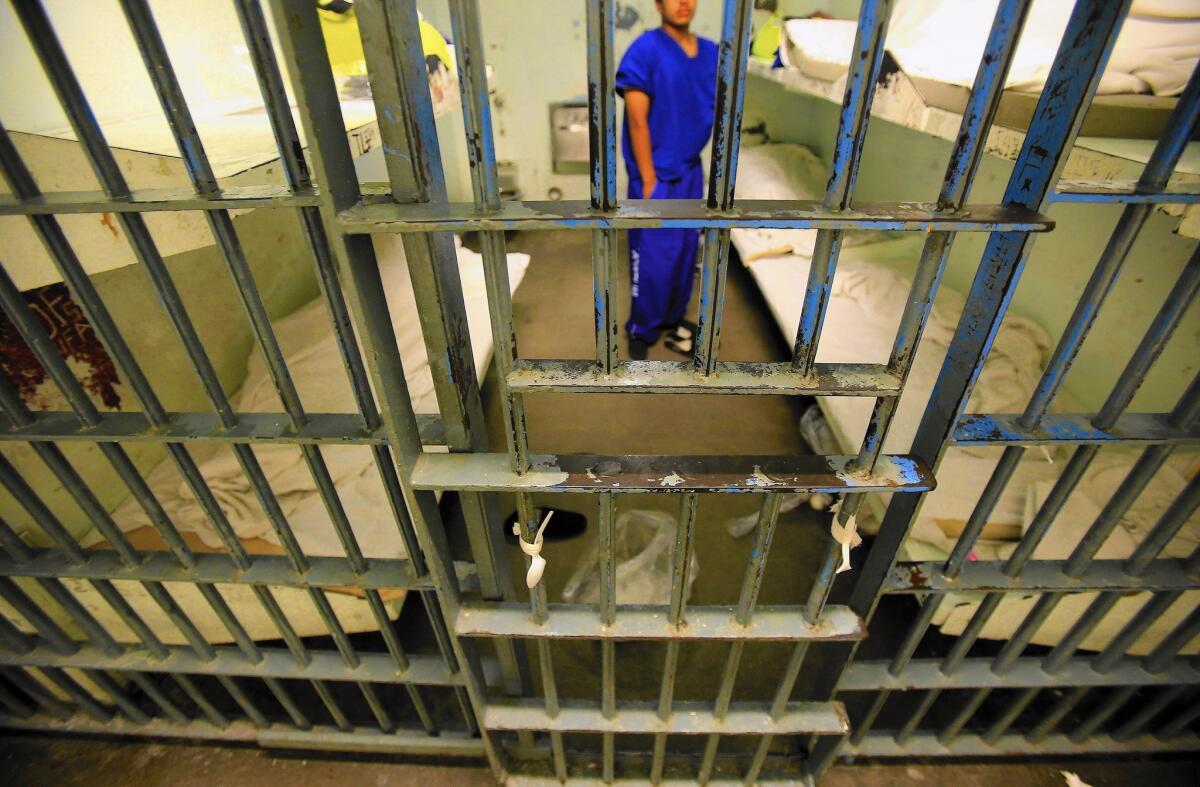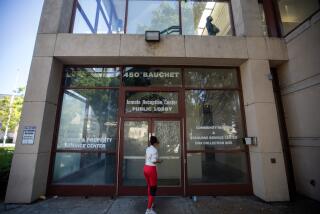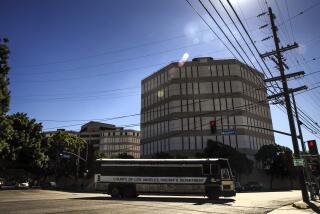As officials ramp up testing in L.A. County jails, first inmate with COVID-19 dies

- Share via
Authorities said that a 47-year-old Los Angeles County jail inmate who tested positive for the coronavirus died Sunday, marking the first death related to COVID-19 in the sprawling system.
The man, who was not identified, was transferred to the county jail from state prison Feb. 22, said Assistant Sheriff Bruce Chase. He was classified as a high-security inmate and held in a single cell at Men’s Central Jail, facing charges of assault and possessing a shank while behind bars, Chase said.
The man fell ill May 15 and was soon transferred to L.A. County-USC Medical Center’s jail ward, where he died. Because he had preexisting health conditions, he had been offered a coronavirus test before he started to show symptoms, but had refused. Chase said some asymptomatic inmates have turned down the tests because of the discomfort of a nasal swab.
“I’m not sure if that would’ve helped us or not,” Chase said, adding that it was unclear where and when the man was exposed to the virus.
The death came as correctional health officials were ramping up COVID-19 testing, aiming to complete testing all inmates held in the jails by next week.
Correctional Health Services Director Jackie Clark said her staff has already tested more than 10,000 people in custody — some of whom have since been released — and now has about 1,600 inmates left to go. She expects the first full round of testing to be done by June 10.
Inmates still waiting on tests are those being held at the Pitchess Detention Center and in high-security housing at Men’s Central Jail, she said.
“Then we’re going to go back and circle back to people who refused the first time,” Clark said.
She said L.A. County is one of the first large correctional facilities in the country to take on a system-wide testing effort. Many have opted instead to test only those who show symptoms.
Since the start of the pandemic, 1,952 inmates have tested positive for COVID-19, according to figures released Monday by the Los Angeles County Sheriff’s Department. Of those, 1,251 were asymptomatic.
On Monday, nearly half the jail population — 5,539 out of 11,992 people — was quarantined, meaning those individuals had been housed with or had contact with someone who was infected or waiting for test results.
Clark said her staff has been hampered by a lack of rapid testing — it still takes about 24 to 48 hours to get results. She said she tried to secure the rapid test machine made by Abbott Laboratories, which delivers results in minutes, but the Department of Health Services was concerned about the high number of false negatives.
“I could live with the false negative because what I want to find out is who’s positive,” she said. “The most important thing for me is to find people who are positive, pull them out and put them in isolation.”
If she were to secure an Abbott machine, she said she would retest every inmate who returned a negative result using the nonrapid test.
“We keep bringing people in,” she said, noting that every new inmate is tested for COVID-19 at intake. “If we don’t have results we don’t know where to move them.”
She said the large number of arrests during the protests over the weekend did not affect jail testing plans because most people were cited and released.
Patrisse Cullors, the chair of Reform LA Jails, which has pushed for system-wide testing, said in a statement that the testing figures show “what we had already foresaw, a massive outbreak in the local jails.”
“The sheriff has deliberately and knowingly allowed coronavirus to spread by making conditions awful, minimizing testing, not screening deputies, and keeping people incarcerated when they shouldn’t be,” Cullors said.
Chase, who oversees the jails, told the Sheriff Civilian Oversight Commission at its meeting last month that the inmate population is just under 12,000, down 32% from before the pandemic, after many low-level offenders were released in an effort to prevent the virus from spreading.
Chase acknowledged that nonviolent and medically vulnerable inmates were still in the jails and that whittling down the population was a work in progress.
The jails house more than 2,000 inmates whose age or preexisting health conditions make them especially vulnerable. Of about 5,400 inmates awaiting trial, more than 1,100 are classified as nonviolent, Chase said.
More to Read
Sign up for Essential California
The most important California stories and recommendations in your inbox every morning.
You may occasionally receive promotional content from the Los Angeles Times.











